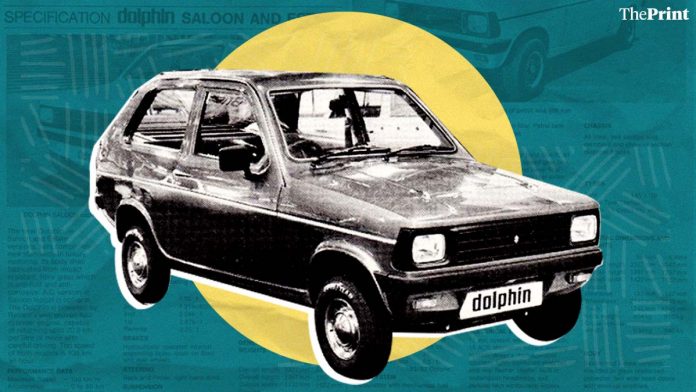The Dolphin’s two-door design and fibreglass body were some features that made it a hit among racing enthusiasts.

Much before the era of luxury cars in India, a small Bengaluru-based car manufacturer began rolling out a two-door car modelled after the British-made Reliant Kitten. The car came with a fibreglass body, power steering, air-conditioning and a four-cylinder engine with a four-speed manual transmission.
Sometime in between the late 1970s and early 1980s, Sipani Dolphin was launched by Sipani Automobiles Ltd, formerly Sunrise Automotive Industries, which has today diversified into real estate, fabrics and various other industries. According to the company website, the Dolphin was “technically the most advanced car in India at that time”. The company had earlier made the three-wheeled Sipani Badal, designed after the British-made Reliant Robin.
However, the Dolphin had its own appeal and, since it was launched before the Maruti 800, did not face much competition in the market immediately. As one Bengaluru resident remarked, “In its day Dolphin was the queen of the road… Heads would turn when I would take the car out.”
A hit in the motorsport circuit
The Dolphin’s two-door design not only spared parents the need for child locks, but also made it a hit among the motorsport circuit, mainly in the South of India. Racing drivers such as Vicky Chandok popularised the Dolphin after taking it out for a spin at the Rallye d’Endurance and the South India rally. In fact, Ramesh Sipani, son of company head RK Sipani, completed the 1982 Karnataka-1000 rally sitting in none other than the Dolphin.
Talking to ThePrint, Chandok says the car was priced reasonably at Rs 55,000-65,000. He adds that its aluminium engine had “phenomenal” mileage” and fibreglass body was “three times stronger than metal”.
However, he recalls, the car had a weakness — the rear axle tended to bend. “We provided the company with feedback about this and they got it repaired. After that, my rally service team was able to change the complete rear end of the car within seven minutes during an event,” he says.
The car quickly became associated with endurance rallying, which usually required four-wheelers that could cover large distances across states and last at least 10 days at a stretch.
The Dolphin’s fibreglass body gave it a very attractive power-to-weight ratio which, as former national rally champion Sagar Muthappa puts it, made the car “light and nimble”. “But by the time I got into the national-level motorsport, the Dolphin had been replaced by the quicker and more efficient Maruti 1000 and the Gypsy,” he tells ThePrint.
From queen of the road to oblivion
Unfoturnately for the Dolphin, its fortunes plummeted when the Maruti 800 entered the market in 1983 and ended up becoming the go-to get-around among the masses. For the Indian middle class seeking to switch up a scooter for four wheels, a two-door car seemed like “ less of a car”, unlike the Maruti 800.
This prompted Sipani to convert the Dolphin into a four-door version called the Montana, but given the Maruti’s technological superiority, it did not take off. Within two years of the launch, Sipani rolled out the Montana D1, referred to as a “mishmash of several automobiles”. Sipani tried a number of new innovations, but just could not keep pace with Maruti, and eventually, threw in the towel.
“I always had a lot of respect for Mr. RK Sipani but I think he was trying to run before he could walk,” says Chandok. “They should have stuck with the Dolphin. It had potential.”
source: http://www.theprint.in / The Print / Home> Features> Brandma / by Pia Krishnamkutty / October 24th, 2020